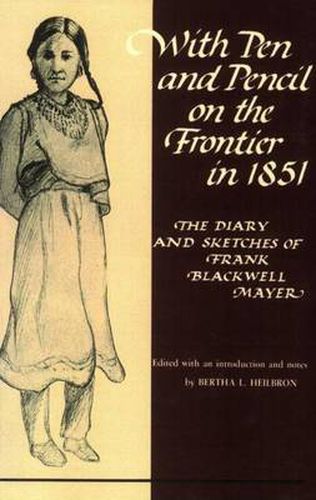Readings Newsletter
Become a Readings Member to make your shopping experience even easier.
Sign in or sign up for free!
You’re not far away from qualifying for FREE standard shipping within Australia
You’ve qualified for FREE standard shipping within Australia
The cart is loading…






In 1851 Frank Blackwell Mayer, a talented young artist from Baltimore, travelled to Minnesota Territory to attend the signing of the Treaty of Traverse des Sioux between the Dakota Indians and the United States government. He went , notes Bertha Heilbron in the introduction, not to participate in the negotiations, but to observe Indian life at first hand and to find subjects for his brush and pencil…With a sure stroke he pictured the scenes and the inhabitants – red and white – of the frontier; with a fluent pen he described all that he saw through the sensitive eye of the artist . Mayer’s diary is a travel narrative, an eyewitness account of a critical treaty signing, and a candid personal view of the development of the artist in mid-nineteenth century America. His words and drawings offer a lively and important resource for historians of art and the frontier, as well as readers of regional history. This edition includes an additional section of Mayer’s diary that was discovered after the book was first published in 1932. Bertha Heilbron’s helpful introductions and annotation provide important historical information for both parts of this valuable document.
$9.00 standard shipping within Australia
FREE standard shipping within Australia for orders over $100.00
Express & International shipping calculated at checkout
In 1851 Frank Blackwell Mayer, a talented young artist from Baltimore, travelled to Minnesota Territory to attend the signing of the Treaty of Traverse des Sioux between the Dakota Indians and the United States government. He went , notes Bertha Heilbron in the introduction, not to participate in the negotiations, but to observe Indian life at first hand and to find subjects for his brush and pencil…With a sure stroke he pictured the scenes and the inhabitants – red and white – of the frontier; with a fluent pen he described all that he saw through the sensitive eye of the artist . Mayer’s diary is a travel narrative, an eyewitness account of a critical treaty signing, and a candid personal view of the development of the artist in mid-nineteenth century America. His words and drawings offer a lively and important resource for historians of art and the frontier, as well as readers of regional history. This edition includes an additional section of Mayer’s diary that was discovered after the book was first published in 1932. Bertha Heilbron’s helpful introductions and annotation provide important historical information for both parts of this valuable document.